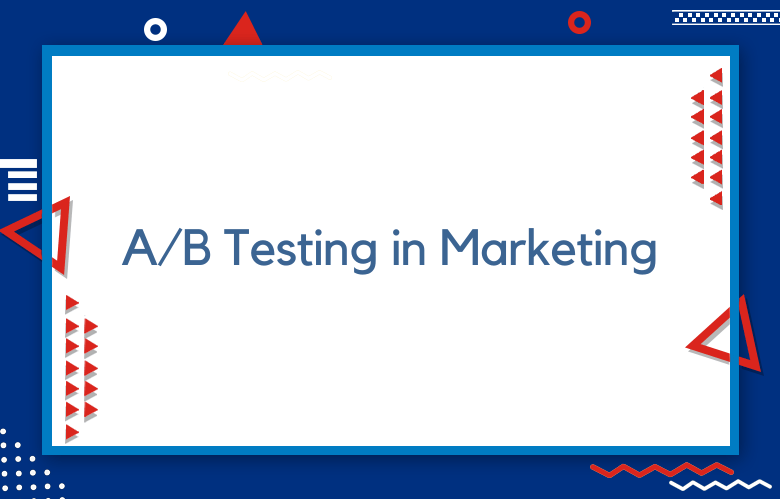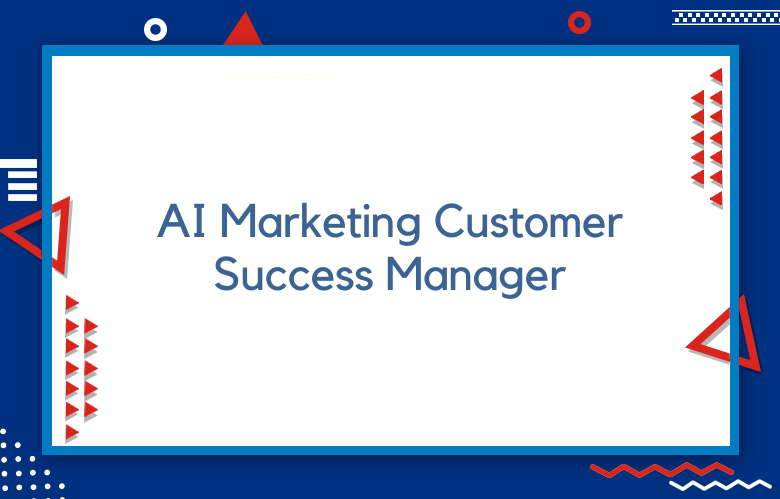Chief Media Officer (CMO) Role and Responsibilities

The Chief Media Officer (CMO) is a senior executive responsible for developing and executing the organization’s media strategy. This role is becoming increasingly important as organizations seek to leverage various media channels to reach and engage with their target audience, build brand awareness, and drive business success.
Chief Media Officer (CMO) Role and Responsibilities
The Chief Multicultural Officer (CMO) role can be likened to an orchestra conductor, masterfully orchestrating a symphony of multicultural strategies to create harmony within an organization.
Just as a conductor leads musicians from diverse backgrounds to perform in unison, the CMO guides an organization through the complexities of multiculturalism, ensuring that diverse voices and perspectives are integrated into a cohesive strategy that benefits the entire organization.
The CMO plays a critical role in shaping the organization’s media strategy, overseeing media planning, buying, and measurement, and ensuring that the media strategy aligns with the organization’s overall marketing and communication objectives.
Duties and Responsibilities
The CMO’s duties and responsibilities may include:
Developing the Media Strategy
The CMO must develop a comprehensive media strategy that outlines the organization’s media objectives, target audience, media mix, and budget. They must stay abreast of emerging media trends and technologies and identify opportunities to leverage new and emerging media channels to reach and engage with the target audience.
Overseeing Media Planning and Buying
The CMO must oversee media planning and buying to ensure that the organization’s media investments are strategic, effective, and efficient. They must collaborate with media agencies and vendors to develop plans that align with the organization’s media strategy and objectives.
Measuring Media Performance
The CMO must develop and implement a robust media measurement framework to track and analyze the performance of media campaigns. They must use data and insights to optimize media investments and drive continuous improvement in media performance.
Building Strong Media Relationships
The CMO must build strong relationships with media partners, including publishers, broadcasters, and social media platforms. They must leverage these relationships to negotiate favorable media deals, secure premium media placements, and gain access to exclusive media opportunities.
Developing Media Partnerships
The CMO must develop strategic media partnerships that enable the organization to reach and engage with its target audience in new and innovative ways. They must identify potential media partners that align with the organization’s brand and values and develop mutually beneficial partnerships that deliver value for both parties.
Unleashing the Power of Storytelling: The Evolving Role of the CMO
The Chief Media Officer (CMO) plays a critical role in developing and executing an organization’s media strategy. The CMO leverages various media channels to reach and engage with the target audience, build brand awareness, and drive business success.
As the media landscape continues to evolve, the role of the CMO also grows, with storytelling becoming an increasingly important component of their responsibilities. Storytelling has always been a powerful tool for engaging and connecting with audiences, but it has become even more critical in today’s media-saturated world.
Audiences are bombarded with messages and content, and it can be challenging for organizations to cut through the noise and make a lasting impact. Storytelling enables organizations to connect with their audience on a deeper level, evoke emotions, and inspire action.
Navigating the Digital Landscape: The CMO’s Strategic Vision
The Chief Media Officer (CMO) is crucial in developing and executing the organization’s media strategy, overseeing media planning and buying, measuring media performance, building solid media relationships, and developing media partnerships. As the media landscape continues to evolve, the role of the CMO is also changing, with a greater emphasis on storytelling, digital media, and data-driven decision-making.
The Power of Storytelling
Today’s consumers are bombarded with marketing messages, making it more challenging for organizations to cut through the noise and engage with their target audience. To overcome this challenge, CMOs increasingly turn to storytelling to connect with consumers emotionally and build brand loyalty.
By developing compelling brand stories that resonate with consumers, CMOs can create a deeper connection with their target audience and differentiate their brand in a crowded marketplace. They must collaborate with creative teams, copywriters, and content creators to develop engaging stories that capture the brand’s essence and values and connect with consumers personally.
Navigating the Digital Landscape
The digital landscape constantly evolves, with new platforms, technologies, and trends emerging daily. CMOs must stay abreast of these changes and adapt their media strategies accordingly to reach and engage with their target audience across multiple channels.
They must develop a strategic vision for how the organization will leverage digital media to reach and engage with its target audience and collaborate with digital marketing teams, data analysts, and technology partners to implement this vision.
Data-Driven Decision-Making
CMOs must leverage data and analytics to inform their media strategies and drive continuous improvement in media performance. They must develop a robust data infrastructure that collects, analyzes, and interprets data from multiple sources to provide insights into media effectiveness, consumer behavior, and market trends.
From Traditional Marketing to Media Mastery: The CMO’s Transformative Journey
The transformative journey of the Chief Marketing Officer (CMO) from traditional marketing to media mastery encapsulates a significant evolution in the role and responsibilities of marketing leaders.
This transition reflects the seismic shifts in the marketing landscape, propelled by digital innovation, changing consumer behaviors, and the proliferation of media channels. Here’s an exploration of this journey, highlighting key milestones and the evolving skill set required for today’s CMOs.
The Era of Traditional Marketing
The journey began in the era of traditional marketing, which focused primarily on print, radio, and television advertising. CMOs were masters of crafting compelling narratives through these channels, aiming to reach a broad audience with a one-size-fits-all message.
Branding, direct mail campaigns, and billboard advertising were the staples of marketing strategies. The primary challenge was to create memorable campaigns that resonated with consumers, driving brand awareness and loyalty through creative storytelling and widespread media coverage.
The Digital Revolution
The advent of the internet and digital technology marked the first significant pivot in the CMO’s journey. As digital platforms emerged, CMOs began to explore the potential of websites, email marketing, and early forms of digital advertising.
This era introduced the concept of two-way communication with consumers, allowing for more direct engagement and feedback. The challenge for CMOs was to integrate these new digital tools into their traditional marketing strategies, balancing innovation with the tried-and-true methods of the past.
The Rise of Social Media and Content Marketing
The explosion of social media platforms transformed the marketing landscape, shifting the focus from broad-based messaging to personalized, engaging content.
CMOs had to become adept at navigating platforms like Facebook, Twitter, and Instagram, using them to foster community, engage in real-time conversations with consumers, and craft shareable and relevant content.
This period saw the rise of content marketing as a critical strategy, with CMOs leading the charge in creating blogs, videos, and other forms of content that provided value beyond traditional advertising.
Data-Driven Marketing and Analytics
The proliferation of data and advanced analytics tools brought the next evolution in the CMO’s journey. With vast amounts of consumer data, CMOs could now make informed decisions based on customer behaviors, preferences, and interactions.
This era emphasized the importance of data-driven marketing strategies, requiring CMOs to develop skills in analytics, customer segmentation, and personalized marketing. The challenge was harnessing this data effectively to optimize marketing campaigns, improve customer experiences, and demonstrate ROI.
Driving Brand Loyalty in a Virtual World: The CMO’s Imperative
The Chief Media Officer (CMO) is crucial in driving brand loyalty by developing and executing a comprehensive media strategy that engages consumers across multiple channels and touchpoints.
To drive brand loyalty in a virtual world, the CMO must develop a strong brand narrative that resonates with consumers and differentiates the brand from its competitors. They must use storytelling to create emotional connections with consumers, highlighting the brand’s values, purpose, and the problems it solves for its customers.
The CMO Revolution: How Today’s Leaders Redefine Success
As technology and digital media continue transforming the marketing landscape, the Chief Marketing Officer (CMO) role is revolutionizing. Today’s CMOs must be tech-savvy, data-driven, and forward-thinking, with a deep understanding of leveraging technology and digital media to drive business success.
Tech-Savvy Leadership
CMOs must understand technology and how it can enhance marketing strategies and drive business growth. They must be familiar with emerging technologies, such as artificial intelligence, virtual reality, and the Internet of Things, and be able to identify opportunities to leverage these technologies to reach and engage with consumers.
Data-Driven Insights
CMOs must use data and analytics to inform their marketing decisions and drive continuous improvement in marketing performance. They must develop a robust data infrastructure that collects, analyzes, and interprets data from multiple sources to provide insights into consumer behavior, market trends, and marketing effectiveness.
Consumer-Centric Marketing
CMOs must prioritize consumer needs and preferences in their marketing strategies, developing personalized and relevant experiences that build brand loyalty and drive consumer engagement. They must use data and analytics to understand consumer behavior and preferences and create marketing campaigns that resonate with consumers and provide value.
Collaborative Leadership
CMOs must collaborate with other functional areas, such as sales, product development, and customer service, to develop integrated marketing strategies that drive business success. They must foster a culture of collaboration and communication and work closely with other functional leaders to identify synergies and cross-functional collaboration opportunities.
Conclusion
The Chief Media Officer is critical in developing and executing the organization’s media strategy, overseeing media planning and buying, measuring media performance, building solid media relationships, and developing media partnerships.
By leveraging various media channels to reach and engage with the target audience, build brand awareness, and drive business success, the CMO can help organizations achieve their marketing and communication objectives and drive long-term growth and profitability.



